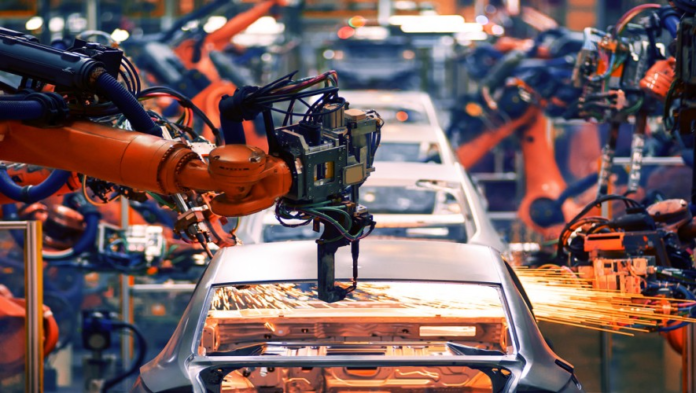Introduction:
The metal production industry plays a critical role in modern society, providing the raw materials necessary for a wide range of applications, from construction and transportation to electronics and renewable energy. However, traditional metal production methods often involve significant environmental and social impacts, including energy consumption, emissions of greenhouse gases, and labor-intensive processes. In recent years, there has been a growing focus on integrating robotics and automation technologies into metal production processes to improve sustainability and efficiency. In this article, we will explore the innovations and trends in the field of robotics and sustainable metal production.
Automation and Robotics in Metal Production:
Automation and robotics have been widely adopted in metal production processes to enhance efficiency, reduce labor costs, and minimize environmental impacts. One of the key areas where robotics is making significant strides is in mining operations. Autonomous vehicles, such as autonomous haul trucks, drills, and loaders, are being used in mining sites to increase productivity, reduce fuel consumption, and improve safety. These autonomous vehicles are equipped with advanced sensors, GPS, and artificial intelligence (AI) technologies that enable them to navigate and operate autonomously in challenging environments, minimizing the risk to human operators and reducing the environmental footprint of mining operations.
In addition to mining, robots are being used in metal processing and manufacturing processes as well. For instance, robotic arms are used in metal smelting and casting processes to handle molten metal, reducing the risk of accidents and improving precision. Robots are also used for welding, cutting, and polishing metal components, which results in higher accuracy and consistency compared to human labor, leading to reduced waste and improved quality.
Sustainable Metal Extraction Technologies:
Sustainable metal extraction technologies are being developed and deployed to reduce the environmental impacts of metal production. For example, bioleaching, a process that uses microorganisms to extract metals from ores, is gaining attention as an environmentally friendly alternative to traditional metal extraction methods. In bioleaching, microbes are used to break down the minerals in ores, releasing metals in a process that is less energy-intensive and produces fewer emissions compared to traditional methods. Robots can play a crucial role in bioleaching processes by automating the monitoring and control of microbial activity, optimizing the process for higher metal recovery rates, and reducing the need for human intervention.
Another emerging technology in sustainable metal extraction is deep-sea mining robots. Deep-sea mining has the potential to extract valuable metals such as copper, cobalt, and nickel from the ocean floor, but it also poses environmental challenges. Robots equipped with advanced sensors and imaging technologies can navigate the harsh deep-sea environment and extract metals with minimal disruption to fragile ecosystems. These robots can also collect data on the environmental impacts of deep-sea mining, helping to develop sustainable practices and minimize ecological damage.
Recycling and Circular Economy:
Recycling and circular economy principles are gaining prominence in the metal production industry as a means to reduce reliance on virgin materials and minimize waste. Robotics is playing a crucial role in advancing recycling technologies and making them more efficient and cost-effective. For instance, robots are used in automated sorting processes to separate different types of metals from electronic waste, scrap metal, and other recyclable materials. These robots use advanced vision systems and AI algorithms to identify and sort different metals accurately, reducing the need for manual labor and improving recycling efficiency.
Energy Efficiency and Renewable Energy Integration:
Energy efficiency is a critical aspect of sustainable metal production, as the energy-intensive nature of metal processing and manufacturing contributes to significant environmental impacts. Robotics and automation technologies are being used to optimize energy consumption in metal production processes, resulting in reduced greenhouse gas emissions and lower operational costs.
One of the key areas where robots are being used to improve energy efficiency is in the optimization of material handling and logistics. Robots can autonomously handle and transport materials within the production facility, optimizing the routing, and minimizing energy consumption. For example, autonomous robots can use sensors and AI algorithms to determine the most efficient paths, avoid unnecessary detours, and optimize loading and unloading processes, resulting in reduced energy consumption and improved productivity.
Human-Robot Collaboration:
Another important trend in the field of robotics and sustainable metal production is human-robot collaboration. Rather than replacing human workers, robots are being designed to work alongside human operators, complementing their skills and capabilities, and improving safety and efficiency in the workplace.
For example, collaborative robots, also known as cobots, are designed to work safely alongside human operators without the need for extensive safety barriers. Cobots can be used in metal production processes to perform repetitive and physically demanding tasks, such as heavy lifting, while human operators can focus on more complex and cognitive tasks, such as decision-making and problem-solving. This collaboration between humans and robots can lead to improved efficiency, reduced human errors, and increased safety in the workplace.
Also Read : Automation in Basketball Analytics: Improving Player Performance
Conclusion:
Robotics and automation technologies are driving innovations in sustainable metal production, improving efficiency, reducing environmental impacts, and enhancing safety in the workplace. From autonomous vehicles in mining operations to robots in metal processing and recycling, and from data-driven decision-making to human-robot collaboration.

